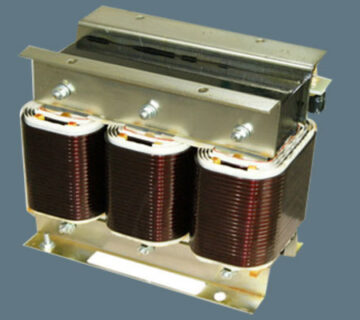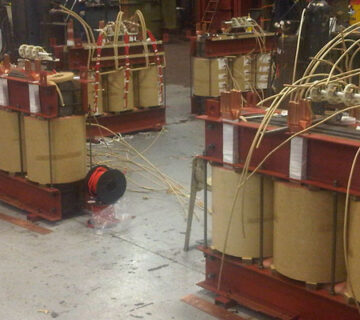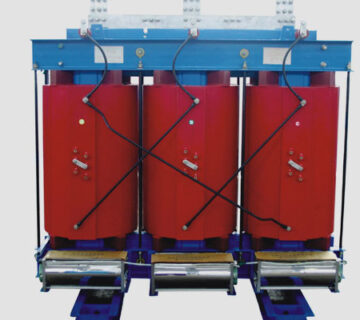Electrical transformers are used to transfer electrical signals from one circuit to another with fluctuating voltage levels and no frequency alteration. They can increase as well as decrease the alternating voltages in electrical power applications. They work on the principle of electromagnetic induction, where a coil of wire magnetically induces a voltage in another coil located close to it. Transformers can step up or step down the voltage and current levels of their supply, as required by the application. Used in both residential and industrial applications, they are used to distribute power across long distances.
How do electrical transformers work?
An electrical transformer is equipped with two windings, named primary and secondary, where the primary winding is connected to the source that takes power, and the secondary winding is responsible for delivering that power. Both the primary and secondary windings share a laminated magnetic core. There is a certain amount of linked flux between the two windings, depending upon which one can observe changes in flux linkage at various rates. Alternating voltage when applied to the primary winding can result in alternating flux in the transformer’s core. Both the windings are thus linked, causing an EMF to be induced in the secondary winding. This EMF causes a load current to be produced is an electrical load is connected to it. In this way, an electrical transformer transmits AC power from one circuit to another by converting the value of electrical energy.
Different types of electrical transformers
Depending upon the construction, supply, purpose, and usage, electrical transformers are of various types.
- Depending upon the construction, an electrical transformer could either be a core type or a shell type.
- Based on the supply, an electrical transformer could either be single phase or three phase.
- Based on the purpose, an electrical transformer could be either step up or step down.
- Based on the usage, an electrical transformer could be any of power, distribution, current, instrument, or potential.
- Based on the cooling, an electrical transformer could be self-cooled oil-filled, water-cooled oil-filled, or air-cooled.
What purposes does an electrical transformer solve?
An electrical transformer –
- Transfers electrical signals from one circuit to another
- Lowers or raises the voltage level in an AC circuit
- Increases or decreases the value of a capacitor or inductor in the AC circuit
- Steps up the voltage level at the power generation site before transmitting and distributing electricity
- Isolates two circuits and prevents the passage of direct current from one circuit to another
With all this knowledge, you are now in a position to get your hands on the most perfect transformers. Whether it is in power generation units, windmills, pumps, or any other similar applications, you can get the best electrical power transformers in Germany at Miracle Electronics, the leader in transformer manufacturing. In fact, here you can get not only power transformers, but many other types of transformers too like toroidal, medical isolation, audio output, audio line matching, EI, UI, and SMPS transformers. But, along with all this knowledge, you should also know how to be safe while using such transformers. And, for this knowledge, you need to read this post.




